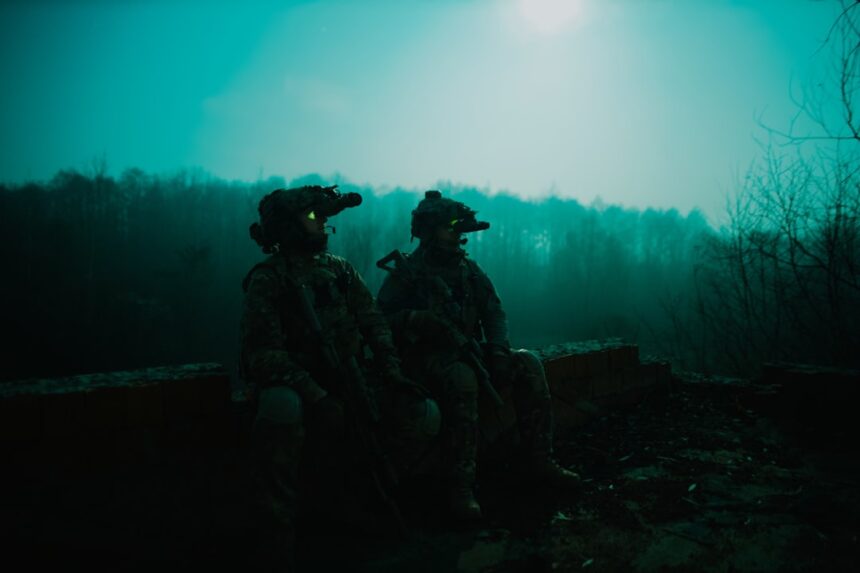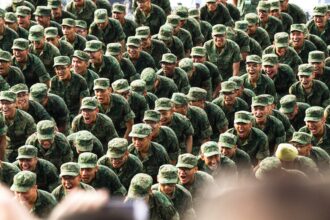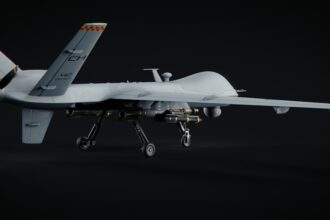The history of military strategy is a rich tapestry woven from the threads of human conflict, innovation, and adaptation. From the earliest days of organized warfare, leaders have sought to devise methods to outmaneuver their adversaries. Ancient civilizations, such as the Egyptians and Greeks, laid the groundwork for strategic thought, with figures like Sun Tzu and his seminal work, “The Art of War,” providing timeless insights into the nature of conflict.
These early strategies emphasized the importance of deception, terrain, and the psychological state of both the enemy and one’s own troops. As societies evolved, so too did their approaches to warfare, reflecting changes in technology, culture, and political structures. As history progressed into the medieval period, military strategy became increasingly complex.
The rise of feudalism in Europe brought about new forms of warfare, characterized by cavalry charges and fortified castles. The introduction of gunpowder in the late Middle Ages marked a significant turning point, leading to the development of artillery and changing the dynamics of battlefield engagements. The Renaissance period further advanced military thought, with strategists like Niccolò Machiavelli advocating for a more pragmatic approach to warfare that considered both moral and ethical dimensions.
This evolution laid the foundation for modern military strategy, which would continue to adapt in response to technological advancements and shifting geopolitical landscapes.
Key Takeaways
- Military strategy has evolved significantly throughout history, shaped by various factors such as technology, intelligence, leadership, and ethical considerations.
- Warfare tactics have evolved from traditional battlefield confrontations to include unconventional warfare, cyber warfare, and information warfare.
- Technology plays a crucial role in modern warfare, with advancements in areas such as drones, artificial intelligence, and cyber capabilities changing the nature of military operations.
- Intelligence and information gathering are essential for understanding the enemy, assessing threats, and making informed decisions in military strategy.
- Offensive and defensive strategies require careful planning and execution, taking into account factors such as geography, terrain, and the psychological aspect of warfare.
The Evolution of Warfare Tactics
Warfare tactics have undergone a remarkable transformation over the centuries, shaped by technological advancements and changing societal norms. In ancient times, battles were often fought in open fields, where formations such as the phalanx or legion were employed to maximize the effectiveness of infantry. As armies grew larger and more diverse, tactics evolved to incorporate a wider range of units, including cavalry and archers.
The introduction of gunpowder in the 15th century revolutionized tactics once again, leading to the development of linear formations that allowed for coordinated volleys of musket fire. The 19th century saw the emergence of new tactics driven by industrialization and mechanization. The American Civil War exemplified this shift, as commanders began to utilize railroads for rapid troop movement and telegraphs for communication.
The concept of total war emerged during this period, where entire nations mobilized their resources for conflict. World War I further transformed warfare tactics with trench warfare and the use of tanks and aircraft, while World War II introduced combined arms operations that integrated air, land, and naval forces in unprecedented ways. Each conflict brought about lessons learned that would shape future military engagements.
The Role of Technology in Modern Warfare

In contemporary warfare, technology plays a pivotal role in shaping strategies and tactics. The advent of advanced weaponry, surveillance systems, and communication technologies has fundamentally altered how wars are fought. Precision-guided munitions have increased the effectiveness of airstrikes while minimizing collateral damage, allowing military planners to achieve strategic objectives with greater efficiency.
Drones have emerged as a game-changer on the battlefield, providing real-time intelligence and enabling targeted strikes without risking human lives. Moreover, cyber warfare has introduced a new dimension to military operations. Nations now engage in battles not only on land and sea but also in cyberspace, where information can be manipulated or stolen to gain an advantage.
The integration of artificial intelligence into military strategy is also on the rise, with algorithms capable of analyzing vast amounts of data to predict enemy movements or optimize resource allocation. As technology continues to evolve at a rapid pace, military leaders must remain agile and adaptable to harness its potential while mitigating associated risks.
The Importance of Intelligence and Information Gathering
| Metrics | Data |
|---|---|
| Number of intelligence sources | 10 |
| Percentage of successful missions due to intelligence | 80% |
| Amount of data collected per month | 1 terabyte |
| Number of intelligence analysts | 50 |
Intelligence gathering has always been a cornerstone of effective military strategy. The ability to obtain accurate information about enemy movements, capabilities, and intentions can mean the difference between victory and defeat. Throughout history, various methods have been employed to gather intelligence, from spies infiltrating enemy ranks to reconnaissance missions using aerial photography.
In modern warfare, intelligence is often derived from a combination of human sources (HUMINT), signals intelligence (SIGINT), and imagery intelligence (IMINT), creating a comprehensive picture of the battlefield. The importance of intelligence extends beyond mere data collection; it also involves analysis and interpretation. Military leaders must be able to discern patterns and trends from the information gathered to make informed decisions.
The failure to accurately assess an opponent’s capabilities can lead to catastrophic consequences, as seen in historical blunders such as the attack on Pearl Harbor or the misjudgments leading up to the Iraq War. In an era where misinformation can spread rapidly through social media and other channels, the challenge of distinguishing fact from fiction has become even more critical for military strategists.
The Art of Offensive and Defensive Strategies
The dichotomy between offensive and defensive strategies is a fundamental aspect of military operations. Offensive strategies aim to seize the initiative by taking proactive measures against an adversary, often seeking to disrupt their plans before they can fully materialize. Historical examples abound, from Napoleon’s rapid maneuvers across Europe to modern blitzkrieg tactics employed by German forces during World War
Conversely, defensive strategies focus on protecting one’s own territory and resources while waiting for an opportune moment to counterattack. This approach can be equally effective when executed properly; historical figures like General Robert E. Lee demonstrated how a well-planned defense could lead to significant victories against numerically superior forces.
The balance between offense and defense is often dictated by the specific context of a conflict, including geographical considerations and available resources. Military leaders must be adept at transitioning between these strategies as circumstances evolve on the battlefield.
Understanding the Psychological Aspect of Warfare

Warfare is not solely a physical contest; it is also a psychological battle that can influence outcomes significantly.
Military strategists have long acknowledged that instilling fear in an enemy can lead to demoralization and disarray within their ranks.
Propaganda has been used throughout history to shape public perception and bolster support for military actions. Moreover, the psychological resilience of troops plays a crucial role in determining their effectiveness in combat. Leaders must foster a sense of camaraderie and purpose among their soldiers while addressing issues such as combat stress and trauma.
The Vietnam War highlighted the importance of morale; soldiers who felt disconnected from their mission were less likely to perform effectively on the battlefield. In modern conflicts, understanding cultural nuances and employing psychological operations (PSYOP) can further enhance a military’s ability to achieve its objectives.
The Impact of Geography and Terrain on Military Operations
Geography and terrain are critical factors that influence military strategy and tactics. The physical landscape can dictate how battles are fought, where forces are deployed, and what resources are available for use. Mountainous regions may favor guerrilla warfare tactics due to natural cover and concealment, while open plains might lend themselves to traditional cavalry charges or armored assaults.
Additionally, understanding local geography allows military planners to exploit advantages over their adversaries. Knowledge of rivers, hills, forests, and urban environments can inform decisions about troop movements and supply lines.
Terrain can also affect communication; mountainous regions may hinder radio transmissions while urban areas can create challenges for maneuverability. As such, effective military strategy requires not only an understanding of one’s own capabilities but also an appreciation for how geography can impact both sides in a conflict.
The Influence of Political and Economic Factors on Military Strategy
Military strategy does not exist in a vacuum; it is deeply intertwined with political and economic considerations that shape national priorities and capabilities. Political leaders often dictate military objectives based on broader geopolitical goals or domestic pressures. For instance, decisions regarding military intervention may be influenced by public opinion or international alliances.
Economic factors also play a crucial role; nations with robust economies are better positioned to sustain prolonged conflicts through funding for personnel, equipment, and logistics. Moreover, resource availability can dictate strategic choices on the battlefield. Nations rich in natural resources may leverage these assets to support their military endeavors or even engage in conflicts over resource-rich territories.
Conversely, economic sanctions or trade restrictions can limit a nation’s ability to wage war effectively. Understanding these political and economic dynamics is essential for military leaders as they formulate strategies that align with national interests while navigating complex international relations.
The Role of Leadership and Command in Military Operations
Effective leadership is paramount in military operations; it can inspire troops to perform at their best or lead them into disarray. Commanders must possess not only tactical acumen but also strong interpersonal skills to build trust among their ranks. Historical figures such as General Dwight D.
Eisenhower exemplified effective leadership during World War II by fostering collaboration among diverse Allied forces while maintaining clear communication channels. Leadership styles can vary significantly based on context; some commanders may adopt an authoritarian approach during crises while others may prioritize consensus-building during peacetime operations. Regardless of style, successful leaders must be adaptable and capable of making difficult decisions under pressure.
They must also be attuned to the needs of their soldiers, recognizing that morale can significantly impact performance on the battlefield.
The Ethical and Moral Considerations in Military Decision Making
Military decision-making is fraught with ethical dilemmas that require careful consideration by leaders at all levels. Questions surrounding just war theory—such as whether a conflict is justified or if civilian casualties are acceptable—often arise during planning stages. Leaders must grapple with balancing strategic objectives against moral imperatives while ensuring compliance with international laws governing armed conflict.
The advent of new technologies has further complicated these ethical considerations; for instance, drone strikes raise questions about accountability when targeting individuals without direct engagement on the battlefield. As warfare evolves into more complex forms involving cyber operations or autonomous weapons systems, ethical frameworks must adapt accordingly to address emerging challenges while safeguarding human rights.
The Future of Military Strategy: Trends and Innovations
As global dynamics continue to shift rapidly due to technological advancements and geopolitical changes, the future of military strategy will likely be characterized by innovation and adaptability. Emerging trends such as hybrid warfare—where conventional forces blend with irregular tactics—will challenge traditional notions of conflict while requiring militaries to develop multifaceted approaches that encompass both kinetic operations and information warfare. Additionally, advancements in artificial intelligence (AI) hold promise for revolutionizing decision-making processes within military contexts; AI could enhance predictive analytics capabilities or streamline logistics management systems for greater efficiency on the battlefield.
However, these innovations also raise concerns about ethical implications surrounding autonomous systems’ use in combat scenarios. In conclusion, understanding historical precedents alongside contemporary developments will be essential for shaping effective military strategies moving forward into an increasingly complex world landscape marked by uncertainty yet ripe with opportunities for growth through innovation-driven solutions tailored toward addressing evolving threats faced by nations globally.
“The WAR Room” documentary delves into the intricate dynamics of modern warfare, exploring the strategic, psychological, and technological aspects that shape military operations today. A related article that complements the documentary’s themes can be found on their official website. This article provides further insights into the behind-the-scenes decision-making processes and the evolving nature of conflict in the 21st century. For more detailed information, you can read the article by visiting The WAR Room’s official website.
CHECK THIS OUT! 📽️🎞️ Hollywood’s Secret War: How the CIA Rewrote Movies
FAQs
What is The WAR Room documentary about?
The WAR Room documentary is a film that follows the behind-the-scenes activities of Bill Clinton’s 1992 presidential campaign. It provides an in-depth look at the strategizing, decision-making, and campaigning that went into Clinton’s successful bid for the presidency.
Who are the key figures featured in The WAR Room documentary?
The documentary primarily focuses on the campaign strategists James Carville and George Stephanopoulos, who played pivotal roles in shaping Clinton’s campaign. It also includes appearances by other key figures such as Paul Begala and Mandy Grunwald.
What are some of the key themes explored in The WAR Room documentary?
The documentary delves into various themes such as the use of media and messaging in political campaigns, the role of strategists and advisors in shaping a candidate’s image, and the impact of personal and political scandals on a campaign.
How was The WAR Room documentary received by critics and audiences?
The documentary was well-received by both critics and audiences, earning praise for its candid and insightful portrayal of the inner workings of a political campaign. It was also nominated for an Academy Award for Best Documentary Feature.
What is the significance of The WAR Room documentary in the context of political campaigning?
The documentary is considered significant for its unprecedented access to the inner workings of a political campaign and its influence on the way political campaigns are portrayed and understood by the public. It has been cited as a landmark in political documentary filmmaking.




